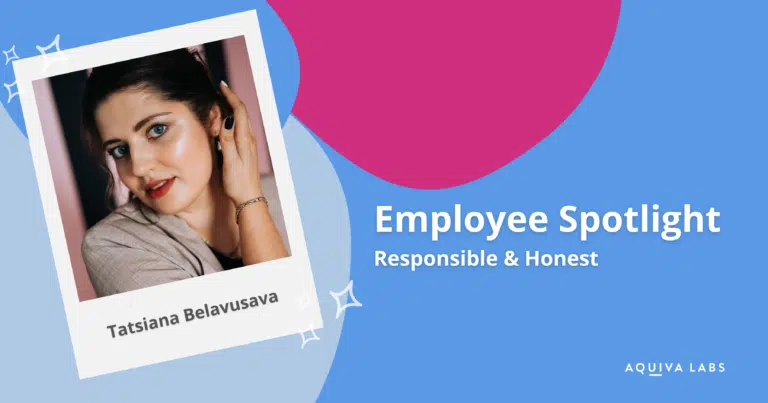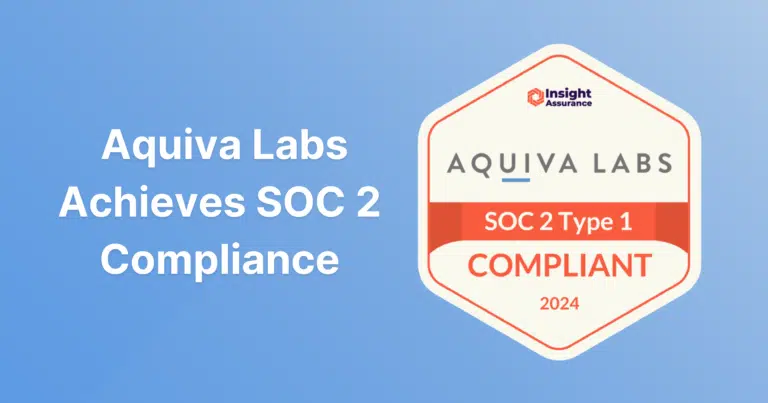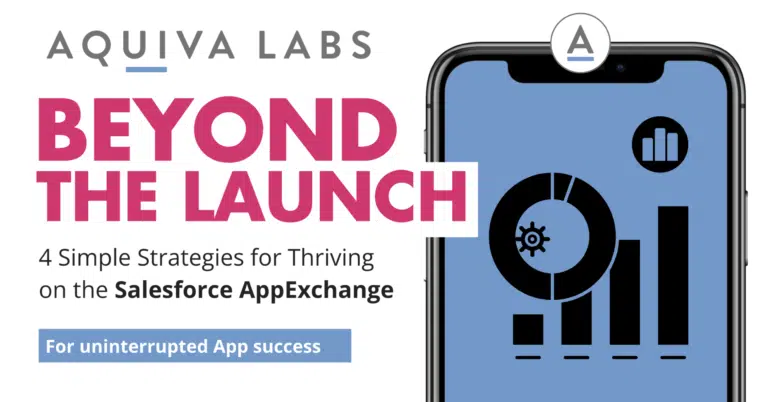All businesses are exposed to risk. Whether from cyber-attacks, a global pandemic, or geopolitical shifts, these events can expose vulnerabilities and affect your ability to deliver your services to market. And as much as we might like to, it’s impossible to eliminate all risks.
Instead, the key is proactively identifying and preparing for potential risks—and that’s where Risk Management comes in.
In the first of our three-part Risk Management blog series, we’ll take a look at what Supplier Risk Management is, why it’s so important, and how to comprehensively assess your business’ risks. We’ll also share how Aquiva Labs evaluates partners and platforms we rely on, as well as steps we proactively take to ensure that we are a responsible strategic development supplier to partner with.
What is Supplier Risk Management?
The world as we once knew it is changing. And fast. As the risks facing online and traditional businesses in the modern era evolve and expand, companies must adapt to survive. And a significant part of that adaptation requires businesses to have appropriate Supplier Risk Management controls.
In its simplest form, Risk Management is the process of identifying, assessing, and controlling potential threats to business capital, earnings, and brand. Supplier Risk Management allows organizations to understand whether and how the platforms and service partners we rely on impact our overall risk posture.
Why Supplier Risk Management is important?
Traditionally, Supplier Risk Management centered around supply chain logistics, ensuring that businesses could operate if one or more elements of a given supply chain was interrupted. But increasingly, executive boards, customers, and businesses are also worried about how security and compliance requirements impact Supplier Risk, in addition to traditional logistics and availability concerns.
When vetting potential partners and vendors, a well-developed Supplier Risk Management Program is vital for flagging any potential security, confidentiality, or privacy risks that could stem from you working together. This process should provide peace of mind for your leadership team, customers, and service users as you share your due diligence results with them.
Effective Supplier Risk Management also allows you to scale confidently and provide organization-wide transparency into potential issues and how to manage through them. This combination of trust and safety enables you to achieve the agility and speed required for success in a fast-paced and ever-growing marketplace.
Why you need a Supplier Risk Management assessment framework?
Managing risk is one thing—but being able to assess those risks accurately is equally important. These risk assessments help leaders identify and mitigate events that could impact their business and brand reputation. Using a framework to assess security risks also helps bring objectivity to a traditionally subjective concept: trustworthiness.
If you store users’ personal or health information, you’ll also need to comply with laws and regulations around how you create, store, and transmit that confidential data. For these businesses, a security risk assessment is compulsory.
The strong growth of the digital marketplace has led to many workers shifting to remote or virtual-first approaches. This brings an increased demand for Salesforce applications that can help drive connectivity and productivity. But at the same time, risks—including cyber-attacks and geopolitical unrest—are growing in frequency and severity, with cyber incidents being identified as the leading risk that businesses now face.
This has led to valid user concerns around the trust they place in a business to keep their data safe. As a result, many companies are pivoting their digital strategies to address these security and compliance concerns. But to do so effectively, a supplier risk assessment is essential.
A 4-step framework for assessing supplier risks
At Aquiva Labs, we’ve developed a framework for helping customers assess their supplier risk. Here’s our four-step framework to evaluate external platform and partner risk:
1. Map
The first stage involves understanding your company processes’ internal and external dependencies. You can either take a bottoms-up approach, mapping key business partnerships first—or a top-down approach, assessing mission-critical business operations first. For greater impact analysis, we recommend a top-down approach.
2. Assess
Now it’s time to either adopt an existing assessment framework or develop your own. You will use this framework to assess and evaluate the strengths and gaps of your processes from the following perspectives:
- Corporate culture
- Documented policies
- Third-party attestation of compliance with policies
- Operationalized tools
- Team capabilities
3. Mitigate
This stage builds on the outcomes from your assessment. At this point, you’ll want to create a prioritized roadmap for each risk. For any significant gaps, you’ll need to create a mitigation plan. We recommend stack-ranking these gaps based on the effort to achieve mitigation and the positive impact of those steps.
For other, less significant risks, you have a range of options. You may take steps to partially remove a risk, accept it, transfer it, or avoid it altogether.
3. Monitor
Security risks are dynamic and can change rapidly. The risks that affected your business six months ago may not be the same that you face today. That means you’ll need to revisit and monitor the security posture of your vendors and partners on a regular, ongoing basis.
Some organizations conduct an annual review to refresh and review their assessments. Others choose to operate on a continuous compliance model, using platform tools to retest assumptions on an ongoing basis. Leaders need to evaluate and select the best option for their company. We recommend investing in additional monitoring for vendors and partners that you’ve identified as either high-risk or those you have lower confidence in. A more periodic approach can work well for vendors and partners who have demonstrated well-established frameworks.
Applying the framework to vet partners and suppliers
Now that you know how the assessment framework is designed, you can use it to score individual partners and vendors across five distinct risk areas: legal, security, privacy, availability, and performance. You’ll need to ask your vendor or partner for details and evidence of how they approach each area.
For each of these five areas, evaluate the vendor’s level of risk from your organization’s perspective. Then, assign them a score of one through five for each area, with one being the lowest risk and five the highest.
Here are a few considerations to think about as you’re evaluating each area:
1. Legal
Does the partner or vendor operate in geographical regions with a transparent legal system for security and privacy topics? Do the governments in those regions have a documented track record of enforcing regulations?
2. Security
Does the partner or vendor have a well-defined and externally validated security program? Can they provide a combination of mature documentation and evidence of compliance? Do they test their team and system’s ability to detect and respond to potentially corrupt or criminal activity?
3. Privacy
What is the vendor or partner’s position on data privacy—and how protective is that position? Is there evidence of a mature program with an accountable party ensuring data privacy expectations are established and met?
4. Availability
Are there potential events unfolding or on the horizon in the short term that could negatively impact the vendor or partner’s ability to deliver on their commitments?
5. Performance
Has the vendor or partner historically met their service level agreement (SLA) and delivery targets? Are there any apparent risks that could potentially disrupt their performance in the near future?
Once you’ve scored a vendor across each area, add the five scores together for an overall trust score. Some vendors and partners may score highly across all areas, while others could have variable scores. You can then use these scores to create a heat map that will guide risk prioritization and mitigation decisions.
A proven approach to Supplier Risk Management
This Supplier Risk Assessment framework is based on the tools we use when vetting platforms and partners used at Aquiva, but these tools also inform how we structure ourselves to be a reliable and safe supplier to work with. As a digital-first company, our relatively small operation saw rapid global growth during COVID-19. As we scaled, security and privacy naturally became an even higher priority. We developed our Supplier Risk Assessment and Management framework as a robust way to provide our customers and partners with a sense of confidence that we are a trustworthy link in their digital supply chain.
This framework gives Aquiva Labs the agility to react rapidly—yet securely—to risks. At the same time, it also allows us to work from anywhere. We created this framework to confidently scale our organization while offering a robust response to growing global security and risk concerns. And with this proven approach to security Risk Management, now you use our experience to your advantage.
Ready to elevate your Supplier Risk Management strategy?
Stay tuned for the next post in the Supplier Risk Management blog series as we explore how to perform supplier risk assessments for digital supply chains.
Don’t want to wait? Contact us now to learn more about our Supplier Risk Management assessment framework or start the conversation on how to develop and implement a similar process in your own business.




